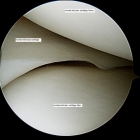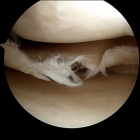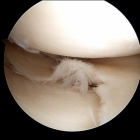Injuries to the meniscal cartilages are among the most common causes of pain in the knee. The meniscal cartilages (often called simply the cartilages or meniscus) are shock absorbers in the knee. There are two meniscal cartilages in each knee, a medial meniscus on the inside of the knee and a lateral meniscus on the outside.
The meniscal cartilage is a half moon shaped piece of tissue that lies between the weight bearing surfaces of the knee. The function of the meniscal cartilages is to evenly distribute load across the knee joint.
Tears to the meniscal cartilage in younger people are usually the result of significant injury to the knee. These injuries often occur during sporting activity and may be associated with damage to other structures around the knee, such as ligament tears.
With age the meniscal cartilages may degenerate and become friable. In this case the meniscal cartilage may tear with only a minor injury, or even with normal activity.
Symptoms
The most common symptom caused by a torn meniscal cartilage is pain. This is often felt on the side of the knee where the cartilage is located. At other times it may be generalised about the knee.
The pain is often made worse by certain activities for example squatting, twisting, stairs or running.
Swelling in the knee often occurs with meniscal tears.
Occasionally the knee can become locked. This occurs when a piece of the torn meniscal cartilage becomes jammed in between the weight bearing surfaces of the knee. This is often very uncomfortable and usually stops the knee from fully straightening.
Treatment
The meniscal cartilage has a very poor blood supply in adults, even in children the blood supply is poor. Because of this a meniscal cartilage tear usually does not heal. Surgery is often required.
The options for painful meniscal cartilage tears are either repair of the tear or removal of the torn portion of the meniscus.
Most tears to the meniscal cartilages are treated by removing the torn portion.
Removing the torn portion of a torn meniscal cartilage is performed by arthroscopy. This is keyhole surgery to the knee. Two or more small (approximately 1 centimetre) incisions are made in the knee. A camera attached to a video monitor is used to inspect the inside of the knee. Specialised surgical instruments are used via the small incisions to remove the torn portion of the meniscal cartilage.
Arthroscopy of the knee is usually performed as a day surgery procedure. Most patients go home the day of the operation.
Usually patients will be able to walk immediately after the procedure, although some may wish to use crutches for pain management.
Usually patients recover quickly from knee arthroscopy. Most patients will return to normal function in about two weeks. That does depend however on what activity is being performed. Patients requiring heavy use of the knee or athletic activity may take significantly longer to return to normal.
Patients who have other problems in the knee as well, especially arthritis of the knee, may take much longer to recover. Patients who have meniscal cartilage resection in the presence of arthritis within the knee may have ongoing symptoms from that arthritis.
During the surgery the torn portion of the meniscal cartilage will be removed. Once that is done the remaining meniscal cartilage is inspected. All portions of the meniscal cartilage that are degenerative or obviously about to tear will require resection.
Most people with an otherwise normal knee who undergo meniscal resection will feel that their knee functions normally after the surgery although a period of rehabilitation and strengthening is often required.





